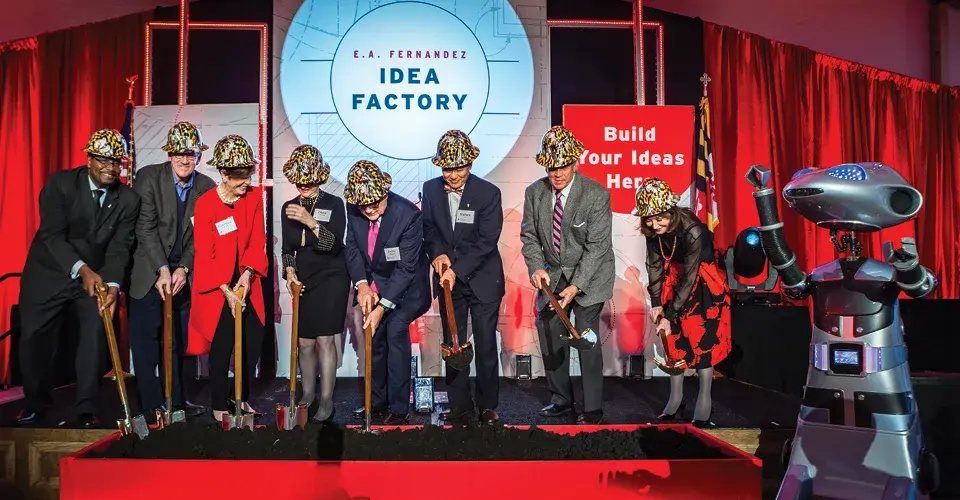New IDEA in the Works
Alum Donates to Engineering Innovation Space
By Annie Dankelson | Photo by John T. ConsoliEver since he can remember, Emilio A. Fernandez Jr. ’69 has been tinkering, imagining and experimenting. Now, the accomplished entrepreneur and inventor is helping the University of Maryland’s creative minds do the same.
Fernandez, who helped develop e-reader technology and made key contributions to the railroad industry, has pledged $10 million toward building the E.A. Fernandez IDEA (Innovate, Design and Engineer for America) Factory, a substantial addition to the Jeong H. Kim Engineering Building designed to encourage faculty and students to disrupt conventional thinking in areas such as robotics, manufacturing, quantum technology and the “internet of things.”
A ceremonial groundbreaking was held on Nov. 13 on the site of the neighboring Potomac Building, demolished over the summer. Construction is expected to be completed in 2021.
“Synergy—when the sum of two plus two is a lot more than four—is a crucial part of the Factory’s mission,” says Fernandez (at right, fifth from left). “And that’s what’s going to happen here.”
A member of the UMCPF Board of Trustees and the A. James Clark School of Engineering’s Board of Visitors, Fernandez came to the U.S. from Cuba alone at an early age, first living with friends in Florida, and then his parents in Bethesda, Md. He spent his high school years taking apart radios, toasters and other electronics and entering science fairs.
To help finance his education at UMD, he worked part-time in a physics lab, assisted with research and learned technical skills, but he spent most of his time in the engineering building, calling it his home away from home.
Fernandez met fellow Cuban immigrant Angel “Angie” Bezos there during sophomore year and asked him one day in class if he wanted to start a company. The pair developed a locomotive recorder device after graduation, then in 1977 co-founded Pulse Electronics, whose patents include train brake controls and separation detection.
The IDEA Factory will be a 60,000-square-foot space with five floors, including research and design labs, conference rooms and offices. ALEx’s Garage, a space for student competition and design teams will be another prominent feature. (The acronym refers to a project designation associated with the development of the e-book.)
Long vistas will make the activities throughout the building visible to passersby. The idea Factory will also be home to the Startup Shell, the student-run incubator.
Fernandez hopes to encourage scientific dialogue, and the IDEA Factory’s open concept and plan for a dining area strives to foster the sharing of ideas.
“There could be a casual understanding of what one group is doing just over a cup of coffee,” he says.
The IDEA Factory will advance the Clark School’s mission of developing leading engineers, transforming the engineering discipline and accelerating innovation and entrepreneurship.
“The E.A. Fernandez IDEA Factory will be a space for the greatest minds of our time to work together to create engineering breakthroughs and solve the grand challenges of the 21st century,” says Darryll Pines, Nariman Farvardin professor and Clark School dean.
0 Comments
Leave a Reply
* indicates a required field

